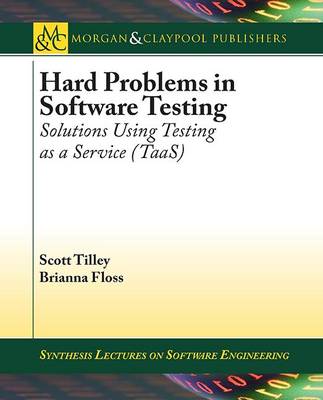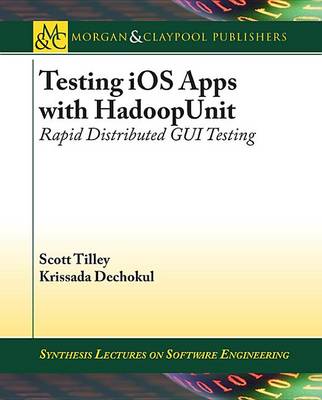Synthesis Lectures on Software Engineering
2 total works
This book summarizes the current hard problems in software testing as voiced by leading practitioners in the field. The problems were identified through a series of workshops, interviews, and surveys. Some of the problems are timeless, such as education and training, while others such as system security have recently emerged as increasingly important.
The book also provides an overview of the current state of Testing as a Service (TaaS) based on an exploration of existing commercial offerings and a survey of academic research. TaaS is a relatively new development that offers software testers the elastic computing capabilities and generous storage capacity of the cloud on an as-needed basis. Some of the potential benefits of TaaS include automated provisioning of test execution environments and support for rapid feedback in agile development via continuous regression testing.
The book includes a case study of a representative web application and three commercial TaaS tools to determine which hard problems in software testing are amenable to a TaaS solution. The findings suggest there remains a significant gap that must be addressed before TaaS can be fully embraced by the industry, particularly in the areas of tester education and training and a need for tools supporting more types of testing. The book includes a roadmap for enhancing TaaS to help bridge the gap between potential benefits and actual results.
The book also provides an overview of the current state of Testing as a Service (TaaS) based on an exploration of existing commercial offerings and a survey of academic research. TaaS is a relatively new development that offers software testers the elastic computing capabilities and generous storage capacity of the cloud on an as-needed basis. Some of the potential benefits of TaaS include automated provisioning of test execution environments and support for rapid feedback in agile development via continuous regression testing.
The book includes a case study of a representative web application and three commercial TaaS tools to determine which hard problems in software testing are amenable to a TaaS solution. The findings suggest there remains a significant gap that must be addressed before TaaS can be fully embraced by the industry, particularly in the areas of tester education and training and a need for tools supporting more types of testing. The book includes a roadmap for enhancing TaaS to help bridge the gap between potential benefits and actual results.
Smartphone users have come to expect high-quality apps. This has increased the importance of software testing in mobile software development. Unfortunately, testing apps-particularly the GUI-can be very time-consuming. Exercising every user interface element and verifying transitions between different views of the app under test quickly becomes problematic. For example, execution of iOS GUI test suites using Apple's UI Automation framework can take an hour or more if the app's interface is complicated. The longer it takes to run a test, the less frequently the test can be run, which in turn reduces software quality.
This book describes how to accelerate the testing process for iOS apps using HadoopUnit, a distributed test execution environment that leverages the parallelism inherent in the Hadoop platform. HadoopUnit was previously used to run unit and system tests in the cloud. It has been modified to perform GUI testing of iOS apps on a small-scale cluster-a modest computing infrastructure available to almost every developer.
Experimental results have shown that distributed test execution with HadoopUnit can significantly outperform the test execution on a single machine, even if the size of the cluster used for the execution is as small as two nodes. This means that the approach described in this book could be adopted without a huge investment in IT resources. HadoopUnit is a cost-effective solution for reducing lengthy test execution times of system-level GUI testing of iOS apps.
This book describes how to accelerate the testing process for iOS apps using HadoopUnit, a distributed test execution environment that leverages the parallelism inherent in the Hadoop platform. HadoopUnit was previously used to run unit and system tests in the cloud. It has been modified to perform GUI testing of iOS apps on a small-scale cluster-a modest computing infrastructure available to almost every developer.
Experimental results have shown that distributed test execution with HadoopUnit can significantly outperform the test execution on a single machine, even if the size of the cluster used for the execution is as small as two nodes. This means that the approach described in this book could be adopted without a huge investment in IT resources. HadoopUnit is a cost-effective solution for reducing lengthy test execution times of system-level GUI testing of iOS apps.

